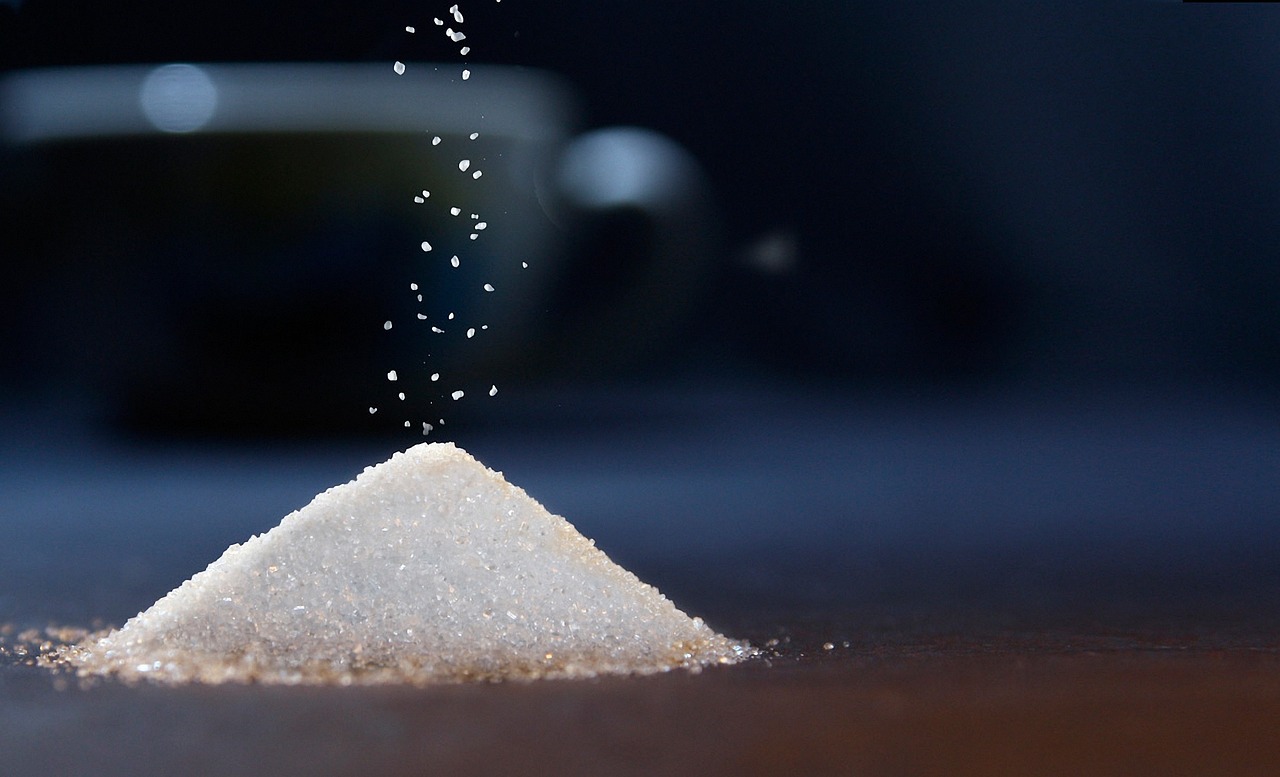Table of Contents
Reduce Your sugar Intake with Sugar Substitutes: Healthy Options
In this step-by-step guide, I will help you reduce your sugar intake by using sugar substitutes. Sugar substitutes are a great way to satisfy your sweet tooth without consuming excessive amounts of sugar. This guide will walk you through the process of incorporating sugar substitutes into your diet, providing you with practical tips and delicious alternatives. By following these steps, you will be able to enjoy your favorite treats while making healthier choices. So let’s get started on your journey to reducing your sugar intake with sugar substitutes!
Understand different sugar substitutes
When it comes to reducing your sugar intake, there are various sugar substitutes available in the market that can be used as alternatives. Let’s explore four popular options: stevia, monk fruit, erythritol, and xylitol.
- Stevia: Stevia is a natural sweetener derived from the Stevia rebaudiana plant. It is known for its intense sweetness and zero calories. Start by purchasing stevia in powder or liquid form. Experiment with adding small amounts to your beverages, such as coffee or tea, and gradually adjust the quantity to suit your taste.
- Monk Fruit: Monk fruit, also known as Luo Han Guo, is a sweet fruit native to Southeast Asia. It contains natural compounds called mogrosides, which provide sweetness without adding calories. Look for monk fruit sweeteners in the form of granules or liquid. You can use it in baking or cooking, just like regular sugar, but remember that monk fruit is much sweeter, so reduce the amount accordingly.
- Erythritol: Erythritol is a sugar alcohol that occurs naturally in some fruits and fermented foods. It has about 70% of the sweetness of sugar but with almost zero calories. Erythritol is available as a granulated or powdered sweetener. Use it in your recipes by substituting it for sugar in a 1:1 ratio, as it measures like sugar.
- Xylitol: Xylitol is another sugar alcohol that is commonly used as a sugar substitute. It has a sweetness similar to sugar and can be used in baking and cooking. However, be cautious, as excessive consumption of xylitol can have a laxative effect. Use it sparingly and gradually increase the amount as you get accustomed to it.
Remember to always read the instructions on the packaging of these sugar substitutes, as their usage may vary slightly between brands. Enjoy exploring these alternatives and find the one that suits your taste and dietary needs best!
Read ingredient labels
When shopping for packaged foods, it is important to carefully read the ingredient labels to identify hidden sources of sugar. Start by looking out for terms like sucrose, glucose, fructose, dextrose, and maltose. These are all different types of sugar that may be added to the product. For example, if you are trying to avoid added sugars, you might want to steer clear of products that list high fructose corn syrup as an ingredient.
In addition to these natural sugars, be aware of artificial sweeteners like aspartame and saccharin. These are sugar substitutes that are often used in “sugar-free” or “diet” products. For instance, if you are trying to cut back on artificial sweeteners, you may want to avoid products that contain aspartame, which is a commonly used sugar substitute.
By carefully reading the ingredient labels, you can become more aware of the hidden sources of sugar in the foods you consume. This will help you make more informed choices and better manage your sugar intake. So, next time you’re at the grocery store, take a moment to read those labels and keep an eye out for these terms!
Gradually reduce sugar intake
Start by cutting down on added sugars in your beverages, such as soda and sweetened coffee/tea. Instead of reaching for these sugary drinks, opt for healthier alternatives like water, unsweetened tea, or infused water with low-carb slices of fruit. If you still find yourself craving something sweet, try using sugar substitutes in moderate quantities. These substitutes can provide the sweetness you desire without the added calories and negative health effects of regular sugar.
Next, gradually reduce the amount of sugar you add to your recipes and drinks over time. Start by cutting the recommended amount of sugar in half and see if you notice a difference in taste. You may be surprised to find that you don’t actually need as much sugar as you thought. Experiment with natural sweeteners like honey or maple syrup, which can add a touch of sweetness while providing additional nutrients.
Remember, reducing sugar intake doesn’t mean you have to completely eliminate all sweet treats from your diet. It’s all about finding a balance and making small, sustainable changes over time. By gradually reducing your sugar intake, you’ll not only improve your overall health but also develop a taste for foods that are naturally sweet. So take it one step at a time, and before you know it, you’ll be consuming less sugar without feeling deprived.
Experiment with recipes
Explore recipes that use sugar substitutes and experiment with them in your cooking and baking. Start by gathering a variety of sugar substitutes such as stevia, monk fruit, or erythritol. Choose a recipe that you enjoy, like cookies or a cake, and gather all the necessary ingredients.
Next, begin by replacing the sugar in the recipe with your chosen sugar substitute. If the recipe calls for 1 cup of sugar, start by using the same amount of substitute. Mix the ingredients together according to the recipe’s instructions, making sure to blend everything well.
Now, it’s time to taste and adjust. Take a small portion of the mixture and taste it to gauge the sweetness and flavor. If it’s not quite right, don’t worry! This is where the experimentation comes in. You can try adjusting the ratio of sugar substitute to find the right balance. If it’s not sweet enough, add a bit more substitute. If it’s too sweet, try reducing the amount. Keep experimenting until you achieve the desired taste.
Remember, different sugar substitutes may have different levels of sweetness, so it may take a few tries to find the perfect balance. Don’t be afraid to mix and match different substitutes to create a unique flavor profile. Enjoy the process of discovering new flavors and techniques in your cooking and baking. Happy experimenting!
Be mindful of portion sizes
When it comes to using sugar substitutes, it’s essential to remember that moderation is key. While these substitutes may offer a lower calorie alternative to traditional sugar, it’s still important to consume them in moderation. To ensure you’re keeping track of your intake, pay close attention to portion sizes and be mindful of the overall calorie content of your meals and snacks.
To begin, start by familiarizing yourself with the recommended portion sizes for the sugar substitute you’re using. This information can usually be found on the packaging or online. Measure out the appropriate amount according to these guidelines, rather than relying on guesswork.
In addition to portion sizes, it’s crucial to be aware of the overall calorie content of your meals and snacks. Remember that even though sugar substitutes may be lower in calories, consuming excessive amounts can still contribute to an unhealthy diet. Use a food diary or a calorie-tracking app to keep tabs on your daily calorie intake and make adjustments as needed.
By being mindful of portion sizes and monitoring your overall calorie intake, you can enjoy the benefits of sugar substitutes while still maintaining a balanced and healthy diet. Remember, moderation is key!
Stay hydrated
Drinking plenty of water is not only essential for overall health, but it can also help you curb cravings for sugary foods and beverages. When you stay hydrated throughout the day, you provide your body with the hydration it needs, which can help support your efforts in reducing your sugar intake.
To start, make it a habit to drink water first thing in the morning. Begin your day by drinking a glass of water before reaching for that cup of coffee or tea. This will not only help rehydrate your body after a night of sleep but can also help reduce cravings for sugary breakfast options.
Throughout the day, keep a water bottle handy and make it a goal to drink water consistently. It’s easy to mistake thirst for hunger, so when you feel a craving for something sweet, try reaching for a glass of water instead. Drinking water can help satisfy your thirst and reduce the desire for sugary snacks.
You can also enhance the flavor of your water by infusing it with fruits or herbs. Add slices of lemon, cucumber, or berries to your water bottle for a refreshing twist. This can make drinking water more enjoyable and can help you stay hydrated without turning to sugary alternatives.
Remember to listen to your body’s signals and drink water whenever you feel thirsty. By staying hydrated, you can support your efforts in reducing sugar intake and maintain a healthier lifestyle overall. So, keep that water bottle close by and drink up!
Seek professional advice
If you have specific health concerns or dietary restrictions, it is important to seek professional advice before making any significant changes to your diet, such as reducing your sugar intake. Consulting with a healthcare professional or a registered dietitian can provide you with personalized guidance and ensure that you are making changes safely and effectively. Here are some steps you can take:
- Schedule an appointment: Reach out to a healthcare professional or registered dietitian to schedule a consultation. This can typically be done by phone or in-person, depending on your preference and availability.
- Share your concerns: During the consultation, be sure to communicate any specific health concerns or dietary restrictions you may have. This will help the professional understand your unique needs and tailor their advice accordingly.
- Discuss your goals: Explain your desire to reduce your sugar intake and any specific goals you have in mind. Whether it’s managing a medical condition or simply improving your overall health, clearly stating your objectives will enable the professional to provide appropriate recommendations.
- Follow their advice: Listen carefully to the advice and recommendations given by the healthcare professional or registered dietitian. They may suggest gradual changes, provide alternative food options, or recommend additional supportive measures to help you successfully reduce your sugar intake.
Remember, seeking professional advice is essential when it comes to your health and well-being. By consulting with a healthcare professional or registered dietitian, you can ensure that your journey to reducing sugar intake is done safely and effectively.
Wrapping Up
In conclusion, reducing your sugar intake with sugar substitutes is a smart and achievable goal. By understanding different sugar substitutes, reading labels, gradually reducing your sugar intake, experimenting with recipes, monitoring portion sizes, staying hydrated, and seeking professional advice when needed, you can make positive changes to your diet and improve your overall health. Remember, it’s not about completely eliminating sugar, but finding healthier alternatives that work for you. Start small, be patient with yourself, and celebrate every step towards a lower sugar lifestyle. Your body will thank you for it!


I never knew there were so many sugar substitutes available. This article was really informative.
I’ve heard that some sugar substitutes can cause digestive issues. Is that true?
I’ve tried using sugar substitutes before, but they always taste weird. Any recommendations?
I wish the article had provided some recipes or tips on how to incorporate sugar substitutes into our daily diet.
I’m glad the article mentioned the importance of moderation when using sugar substitutes. It’s easy to go overboard.
Are there any health risks associated with long-term use of sugar substitutes?
Great article! I’ve been looking for ways to reduce my sugar intake.